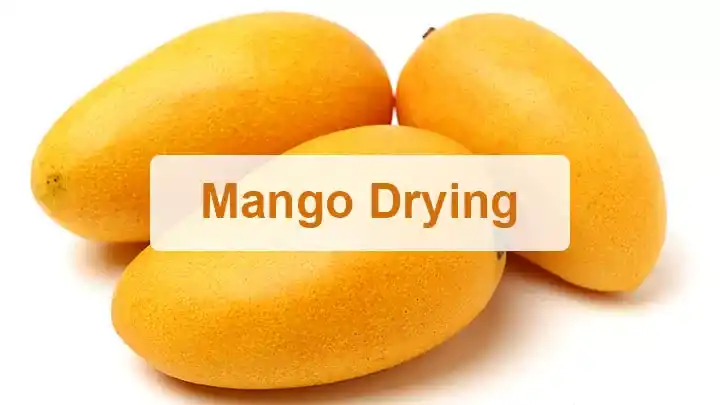
A mango dryer turns fresh mangoes into dried mangoes that are easy to store.
Mangoes are a popular tropical fruit — sweet and delicious — but they spoil quickly and have a short shelf life. To extend shelf life, facilitate transportation, and increase product value, drying mangoes is an ideal solution.
This article will cover the reasons for drying mangoes, drying methods, how to choose a dryer, and further processing options.
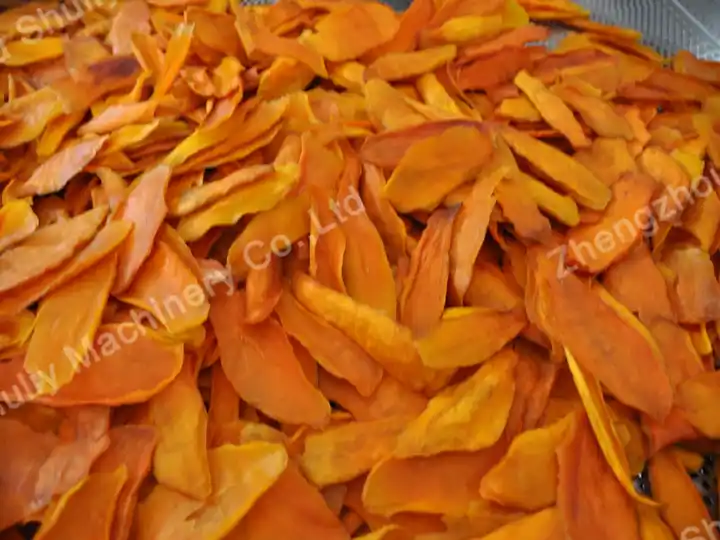
Why Dry Mangoes?
1. Extend Shelf Life
Fresh mangoes have high water content and spoil easily. Drying removes moisture, extending shelf life from a few days to several months and reducing losses.
2. Easier Storage and Transport
Dried mangoes are smaller, lighter, and less prone to damage, making them easier to package, transport, and sell over long distances — ideal for export or cross-region sales.
3. Increase Product Value
Dried mango is a high-value product, priced higher than fresh fruit. It can be sold as a snack, baking ingredient, or beverage ingredient.
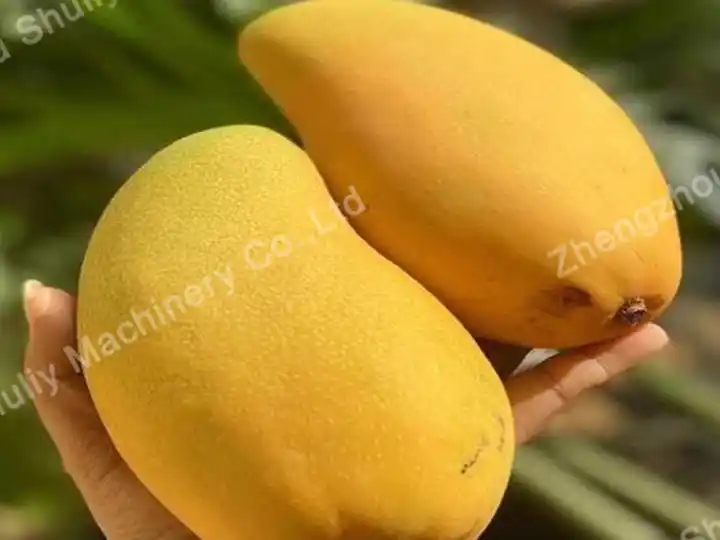
4. Meet Market Demand
With the rise of healthy snacks and convenience foods, consumer demand for dried mango continues to grow.
5. Reduce Seasonal Pressure
Mangoes have a short harvest season. Drying allows year-round sales, balancing supply and demand.
6. Prepare for Further Processing
Dried mango can be used for further processing, such as making candied fruit, jam, or fruit powder, expanding product lines and market applications.
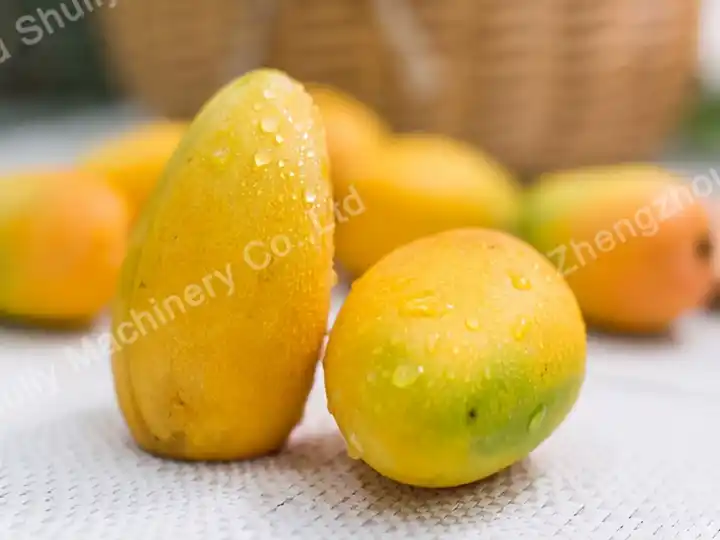
How to Dry Mango Slices?
Prepare the Raw Material
Choose mangoes that are ripe but firm, with full flesh and no pests or damage. Wash them thoroughly to remove dust and impurities. Remove any damaged or spotted fruit to ensure uniform, attractive dried slices.
Slice the Mango
Remove the pit and cut the mangoes into 3–5 mm thick slices. Even thickness is important: too thick slices dry unevenly, while too thin slices can become hard and lose texture.
Pre-Dehydration
To speed up drying, pre-dehydrate the slices. Common methods include air drying or using a low-temperature fan. Maintain 40–45°C for 30–60 minutes to evaporate surface moisture.
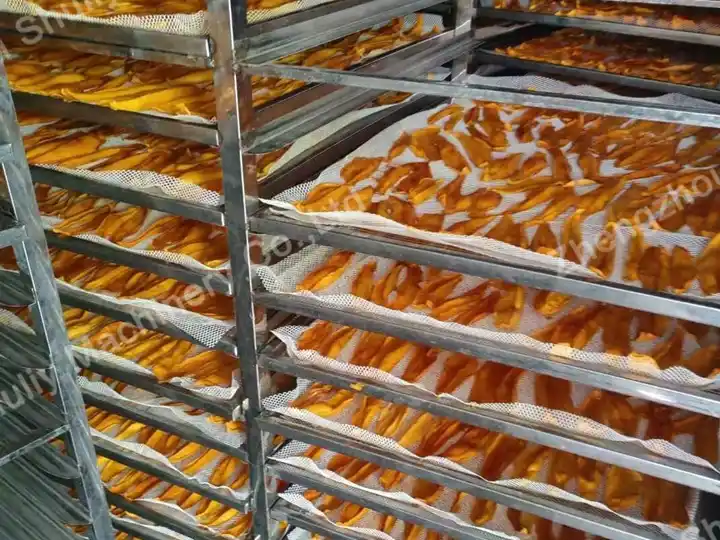
Drying Process
Drying removes the remaining moisture and is the key step. Use hot air circulation or a drying room. Control temperature, time, and humidity carefully:
- Temperature: 55–65°C is ideal. Too high can darken or burn slices; too low slows drying and risks mold.
- Time: Usually 6–12 hours, depending on thickness and moisture. Turn slices halfway for even drying.
- Humidity: Keep air humidity around 15–25% to help moisture evaporate quickly.
After drying, mango slices should be flexible, golden, and mold-free. Let them cool and rest to stabilize moisture.
Packaging and Storage
Pack fully dried mango slices immediately to prevent moisture absorption. Sealed, cool, and dark storage can extend shelf life to 6–12 months.
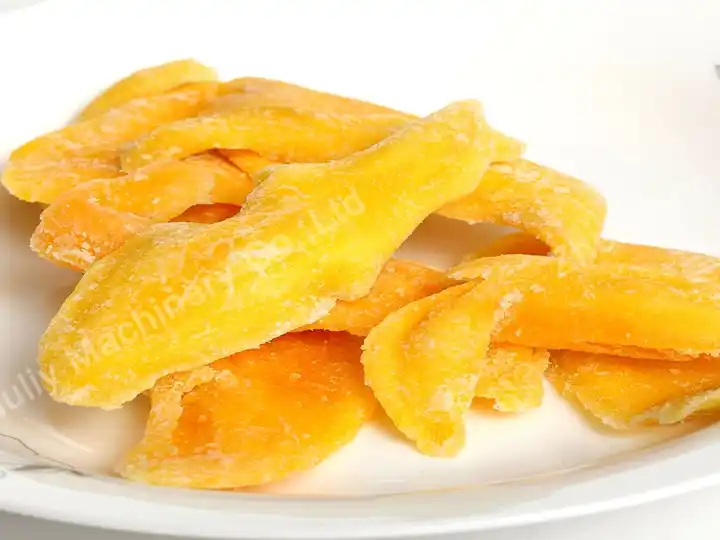
How to Choose a Mango Dryer?
1. Production Capacity
First, determine your production scale. Different models suit different capacities:
- SL-2: Small-scale production, handles 300–600 kg per batch.
- SL-4: Medium-small scale, handles 500–1000 kg per batch.
- SL-24: Large-scale production, handles 5000–8000 kg per batch.
Choose a model that matches your production needs for efficient operation.
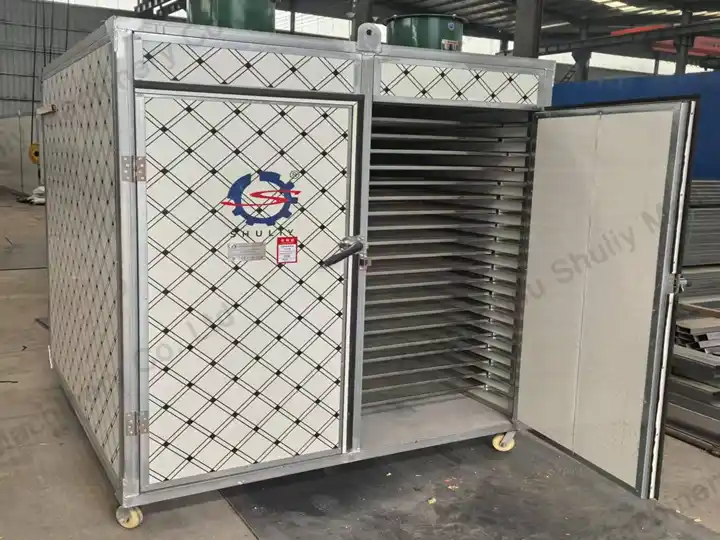
2. Drying Method and Temperature Control
Drying mangoes requires precise temperature control. Select a dryer with efficient hot air circulation and a temperature control system to ensure even heat distribution, avoiding over- or under-drying.
3. Operation and Maintenance
Consider ease of use and maintenance. A dryer with a user-friendly interface and low maintenance requirements reduces training time and operating costs.
4. Energy Efficiency and Environmental Impact
Choose energy-saving and eco-friendly dryers. Efficient hot air circulation and insulation reduce energy consumption and meet modern environmental standards.
5. After-Sales Service and Technical Support
Pick a manufacturer that provides reliable after-sales service and technical support. This ensures timely help in case of malfunctions or when technical guidance is needed, keeping your production line running smoothly.
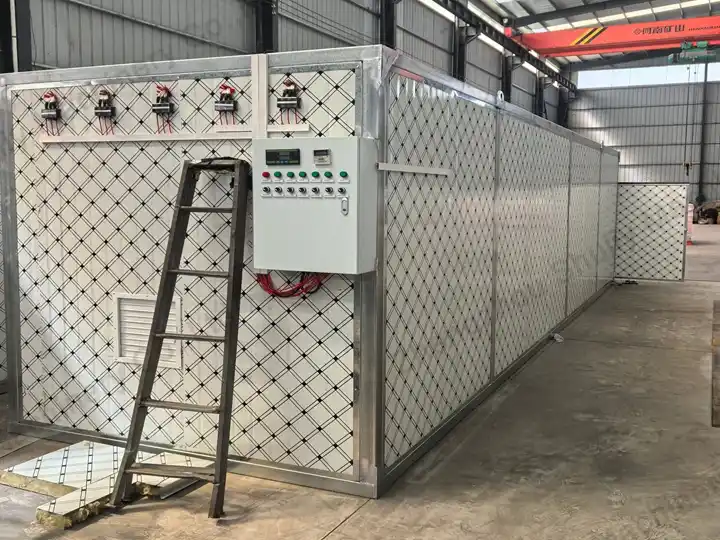
Our Drying Room Models and Reference Capacities
| Model | Dimensions(mm) | Drying crews | Quantity of drying material (times/kg) |
| SL-2 | 4000*1860*2500 | 2 | 300-600 |
| SL-4 | 6000*1860*2500 | 4 | 500-1000 |
| SL-6 | 7200*2300*2500 | 6 | 800-1500 |
| SL-8 | 8500*2300*2500 | 8 | 1000-2000 |
| SL-10 | 10000*2300*2500 | 10 | 1200-2500 |
| SL-12 | 8500*3300*2500 | 12 | 2500-4000 |
| SL-18 | 8500*5000*2500 | 18 | 4000-6500 |
| SL-24 | 12000*5000*2500 | 24 | 5000-8000 |
Click the link below:
Mango Further Processing
Recommended Processing Methods:
- Direct Packaging: After drying, package as dried mango snacks.
- Grinding: Grind into mango powder for use in beverages, pastries, and candies.
- Composite Processing: Combine with sugar or honey to make candied mango or preserved fruit.
Partnering with Shuliy
We offer a complete mango drying solution, providing one-stop support from raw material preparation, slicing, drying, to further processing equipment.
Whether for small-scale trial production or large-scale commercial production, we have suitable drying room models and professional technical support to help you efficiently and safely produce high-quality dried mango.
Contact us now to customize your mango drying production line and achieve year-round supply with high added-value returns!

